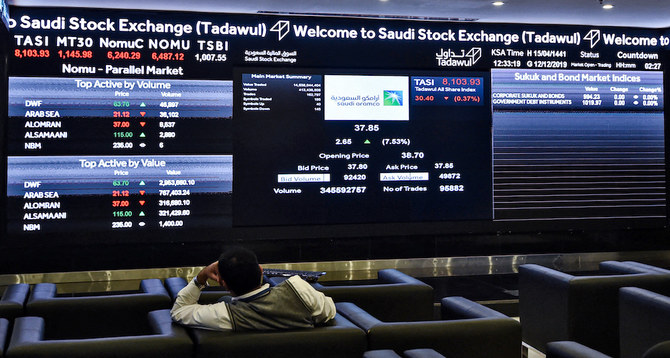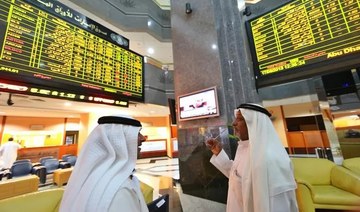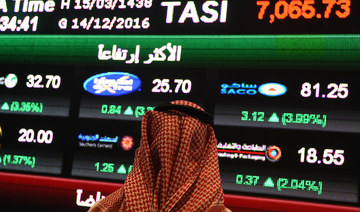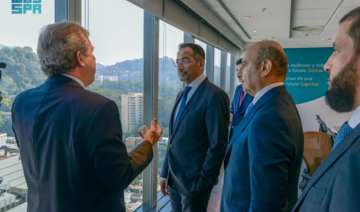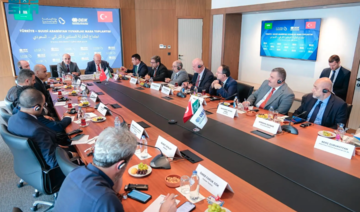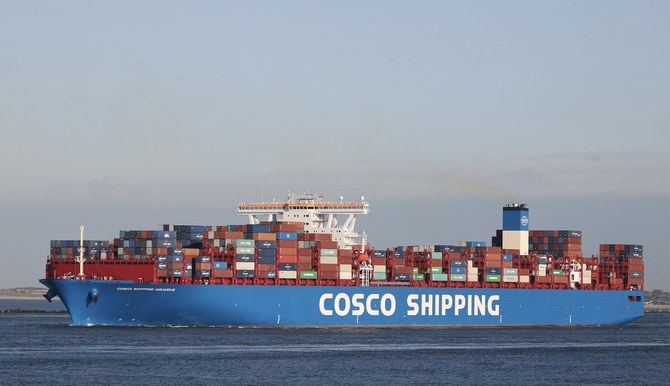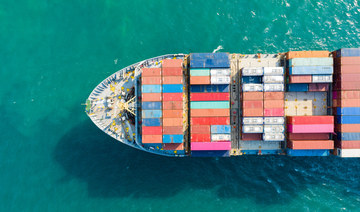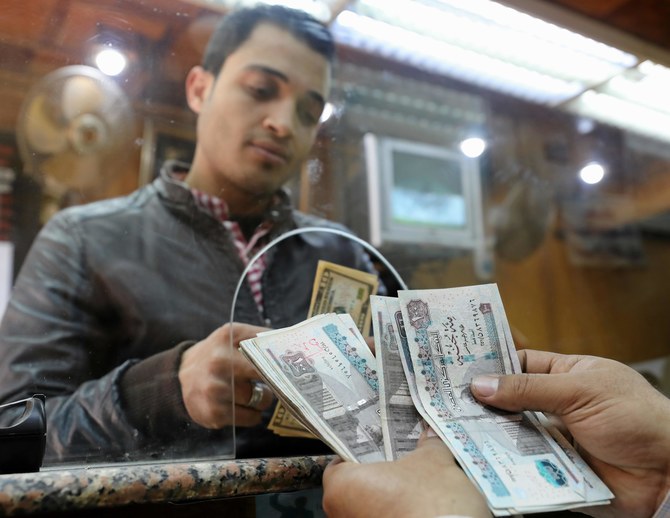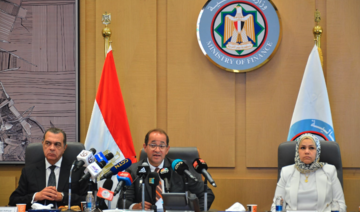RIYADH: Stock markets in the Middle East continued to recover following “Black Monday,” when global indices plunged due to concerns over a potential US recession triggered by a weak jobs report from the world’s largest economy.
Saudi Arabia’s Tadawul All Share Index closed at 11,729.71, up by 50.55 points, or 0.43 percent on Wednesday.
The total trading turnover of the benchmark index was SR6.98 billion ($1.86 billion), as 169 of the stocks advanced, while 62 retreated.
The Kingdom’s parallel market Nomu rose 207.67 points, or 0.81 percent, to close at 25,903.77, with 30 of the listed stocks advancing and 31 retreating.
The MSCI Tadawul Index gained 0.79 points, or 0.05 percent, to close at 1,467.35.
Rabigh Refining and Petrochemical Co. was the top performer of the day, with its share price climbing 10 percent to SR8.14.
Other notable performers included Baazeem Trading Co. and Al-Baha Investment and Development Co.
The worst performer was Malath Cooperative Insurance Co. whose share price dropped by 6.12 percent to SR15.66.
Walaa Cooperative Insurance Co. and Rasan Information Technology Co. also saw declines.
On the announcements front, Kingdom Holding Co. reported a 76.43 percent increase in net profits for the first half of this year, reaching SR820 million. The increase was attributed to higher equity results, gains on investment property sales, and reduced financial charges.
Saudi Electricity Co. reported a 16.5 percent rise in net profits for the first half of 2024, totaling SR5.5 billion, driven by increased revenue and reduced finance costs.
Saudi Cable Co. saw an 87.7 percent drop in net profit to SR7.02 million, while SAL Saudi Logistics Services Co. reported a 70.71 percent increase in net profit to reach SR363 million due to higher revenues and cost control efforts.
Rabigh Refining and Petrochemical Co. reported a net loss of SR2.46 billion for the first half of the year, widening from SR2.1 billion in the same period last year attributed to decreased sales volumes and margins.
Alkhorayef Water and Power Technologies Co. reported a substantial increase in net profits, reaching SR119 million in the first half of 2024, marking a 75.57 percent surge compared to the same period the previous year, driven primarily by a boost in operating profits.
National Metal Manufacturing and Casting Co. experienced a net loss of SR19.17 million during the first six months of the year. This represents a deterioration from the SR12.46 million loss recorded in the corresponding period of 2023. The increased loss is attributed to a decline in sales of axle, spare parts, and casting products, as well as a reduction in the average selling price of drawn wire products.
Riyadh Cement Co. achieved net profit of SR134 million in the first half of 2024, a 6.22 percent increase from the same period last year due to higher sales prices and increased revenues, despite rising Zakat expenses.
On Wednesday, the Dubai Financial Market rose by 1.45 percent, while the Abu Dhabi Exchange increased by 1.05 percent.
The Qatar Stock Exchange gained 0.28 percent, the Bahrain bourse edged up by 0.09 percent, and the Kuwait bourse advanced by 0.84 percent.



